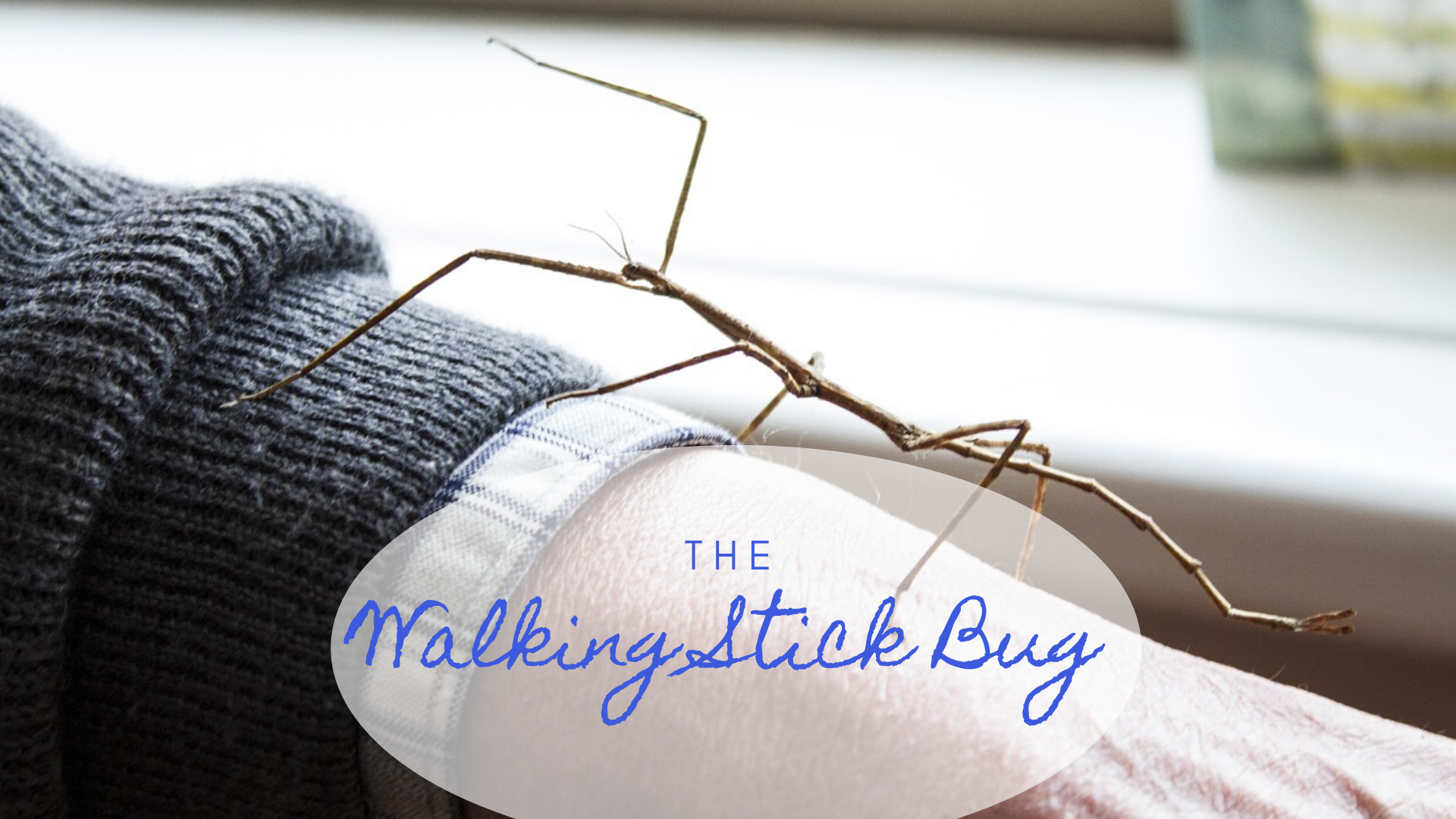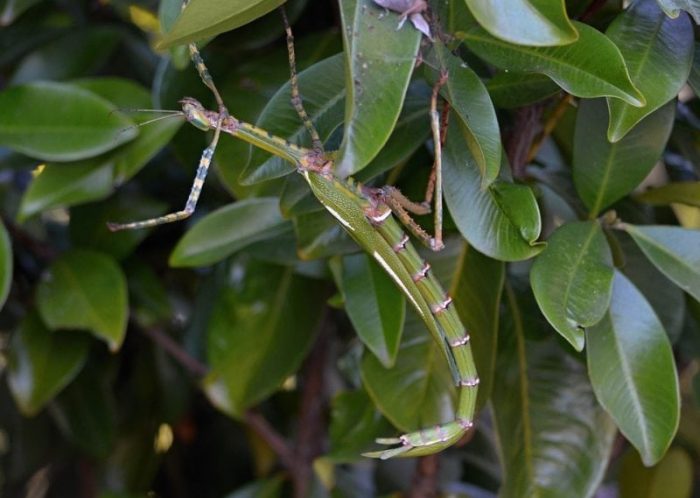
Walking stick bugs are one of the coolest insects, and not just solely for the fact that they quite literally look like sticks that can walk. These bugs are extremely interesting, and there are over 3,000 different species of walking sticks. With over 3,000 different species you might think that they all look alike, but these different species can look very different than the others, it all just depends on where they live. To learn all about walking sticks check out this guide.
Look at the bark of a redwood, and you see moss. If you peer beneath the bits and pieces of the moss, you’ll see toads, small insects, a whole host of life that prospers in that miniature environment. A lumberman will look at a forest and see so many board feet of lumber. I see a living city. – Sylvia Earle
Walking Stick Bugs: What Are They?

Image source: Pixabay
| Walking Stick Bug Facts | |
| Kingdom | Animalia |
| Class | Insecta |
| Superorder | Exopterygota |
| Order | Phasmatodea |
| What they eat | Plants |
| Size | Up to 12 inches |
| Lifespan | 3 years |
Walking stick bugs are more commonly referred to by their scientific names (In the United States at least) of either Phasmatodea, Phasmida, as occasionally as Phasmatoptera. In Europe, they call these insects stick-bugs or bug-sticks.
The name Phasmatodea comes from the Greek term phasma, which means phantom or ghost. This is very aptly named because walking sticks are incredible at camouflage by quite literally looking like a stick. This camouflage keeps the walking sticks hidden from predators, but it isn’t their only line of defense. Many different species also have thorny spines or can even secrete toxins.
Where Do Walking Stick Bugs Live?

Image source: Pixabay
You can actually find walking stick bugs on every continent except for Antarctica.
You can primarily find walking sticks in subtropical and tropical environments, however, they can also be found in grassy areas and forests. What is very fascinating is that we can find over 300 different species on one island alone; Borneo. So if you want to see a bunch of different Phasmatodea you might just want to take a trip to Borneo to check them out.
Another extremely interesting thing about Phasmatodea is that they are generally considered to be harmful to forests and are a contributing factor to defoliation. Phasmatodea eats leaves on trees (obviously) and has ended up eating up too many leaves. In the United States, walking sticks are also known to eat wood from Oak trees, causing problems in National Parks. In Oklahoma walking sticks have been known to have been the cause of severe outbreaks, called Diapheromera femorata, where trees can actually be bare of leaves because walking sticks have eaten everything. While this may seem like a no big deal if this happens often to a tree the tree will die, so there is a cause for concern.
One “defense” humans have employed against the devastating walking stick numbers is the use of other insects to prey on walking sticks. This was done in Wales by using “parasitic wasps” that attack walking sticks. The other option is to use chemicals against the walking sticks, but that could harm plants and other insects. Yet another option that humans have used against walking sticks is to actually burn their eggs, which prevents new bugs from attacking the trees. Obviously lighting fire to insects can cause other problems, although it would be great for stress relief if you are into that sort of thing.
Planting native species in our gardens and communities is increasingly important, because indigenous insects, birds and wildlife rely on them. Over thousands, and sometimes millions, of years they have co-evolved to live in local climate and soil conditions. – David Suzuki
Walking Stick Bug Behavior
Interestingly enough these insects behave very similarly to another odd bug; the praying mantis. As you can see in the video above the praying mantis actually rocks back and forth like it’s trying out for an 80’s hair band. In the video below you can see a walking stick rocking out to some music.
So what’s the story with the rocking? Scientists believe it is a mechanism these insects use to better differentiate items in their line of sight. Basically, it makes it easier for them to see what is in the background and what is close to them. It looks silly but is actually pretty useful to these guys.
These insects can mate for a very long time. As in, very long time. A species of Phasmatodea has been found to be mating for over 80 days in India. That must be quite the party with those bugs. Male Phasmatodea are very aggressive towards other males and have been found to essentially trap the female while mating when two males are duking it out over who is dominant. This battle can get intense and there are times that the original mate is forced out by the new male, who then proceeds to mate with the female. To say that mating can be pretty intense for walking sticks is a bit of an understatement.
Walking Stick Bugs As Pets
Most often we know Phasmatodea as pets. Many schools, for instance, use them as class pets to teach kids about insects. There are many species of walking sticks that make for good pets because they are easy to maintain and they tend to just do their own thing, and they are also just plain cool looking. They are pretty cheap to keep since they eat lettuce, they don’t stink, most have no wings so they won’t make a bolt out of the window, and they can go for days, if not a week without care so you don’t need a pet sitter. There are a few disadvantages to them, however. You will probably;y need a special exotic permit to own one, and if one manages to escape it will become a nuisance to your community.
These walking stick bugs can teach us a lot about insects, such as how they can camouflage to avoid predators and even mating habits. They are most well known to humans as pets and can be great family pets as long as they are kept contained and are not able to escape.









